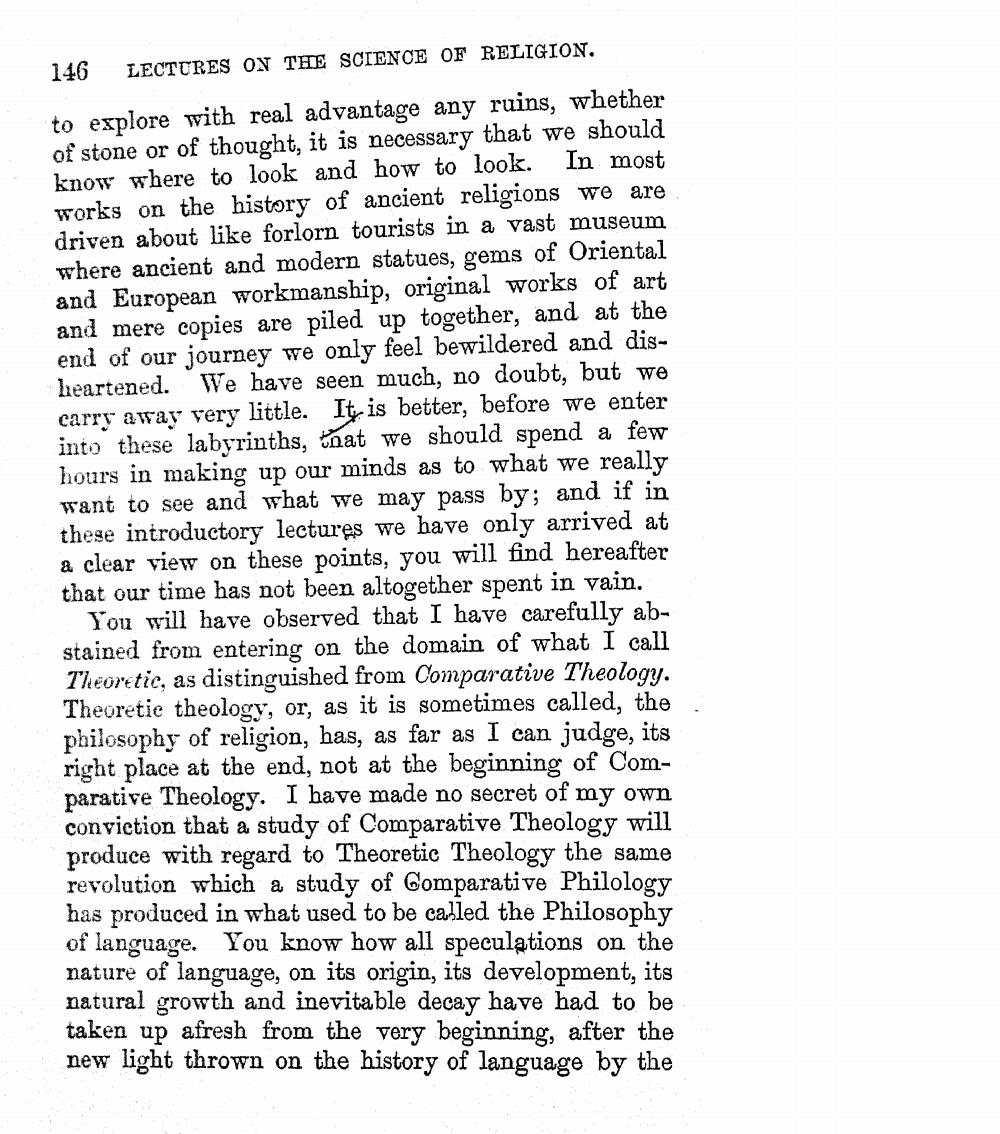________________
146 LECTURES ON THE SCIENCE OF RELIGION. to explore with real advantage any ruins, whether of stone or of thought, it is necessary that we should know where to look and how to look. In most works on the history of ancient religions we are driven about like forlorn tourists in a vast museum where ancient and modern statues, gems of Oriental and European workmanship, original works of art and mere copies are piled up together, and at the end of our journey we only feel bewildered and disheartened. We have seen much, no doubt, but we carry away very little. It is better, before we enter into these labyrinths, tnat we should spend a few hours in making up our minds as to what we really want to see and what we may pass by; and if in these introductory lectures we have only arrived at a clear view on these points, you will find hereafter that our time has not been altogether spent in vain.
You will have observed that I have carefully abstained from entering on the domain of what I call Theoretic, as distinguished from Comparative Theology. Theoretic theology, or, as it is sometimes called, the philosophy of religion, has, as far as I can judge, its right place at the end, not at the beginning of Comparative Theology. I have made no secret of my own conviction that a study of Comparative Theology will produce with regard to Theoretic Theology the same revolution which a study of Comparative Philology has produced in what used to be called the Philosophy of language. You know how all speculations on the nature of language, on its origin, its development, its natural growth and inevitable decay have had to be taken up afresh from the very beginning, after the new light thrown on the history of language by the




